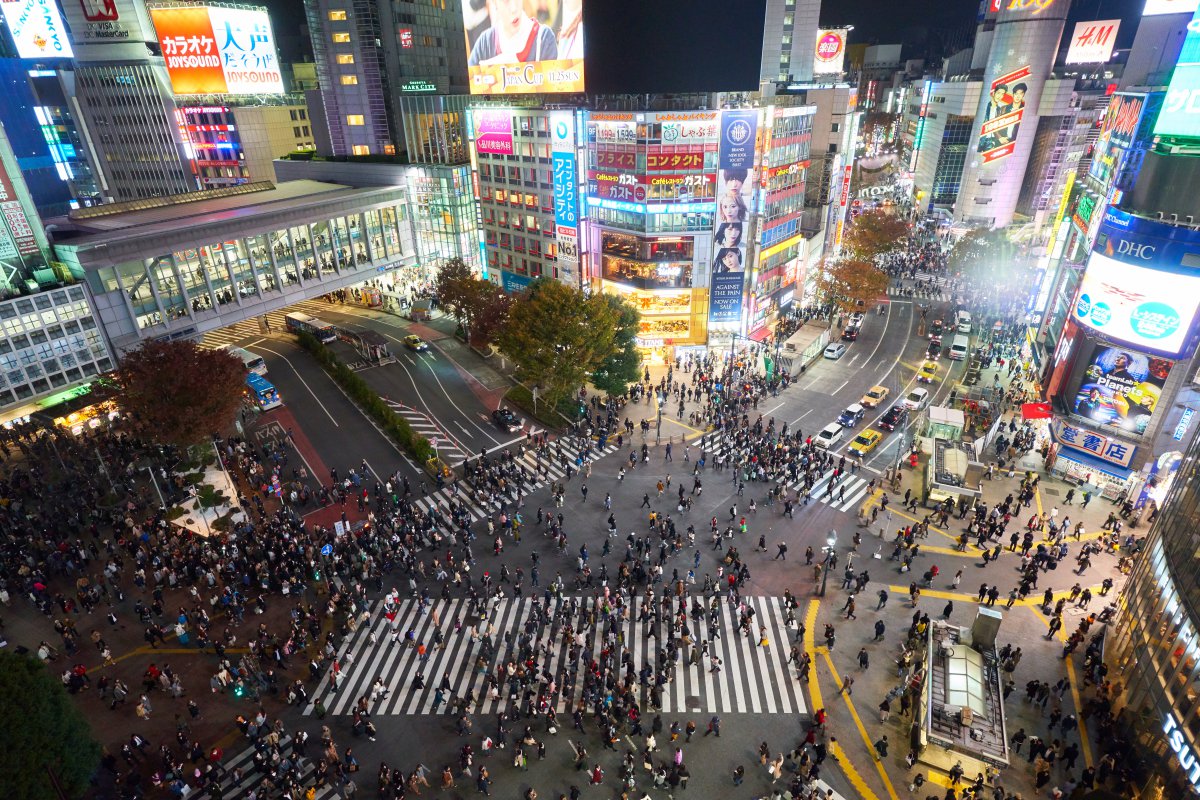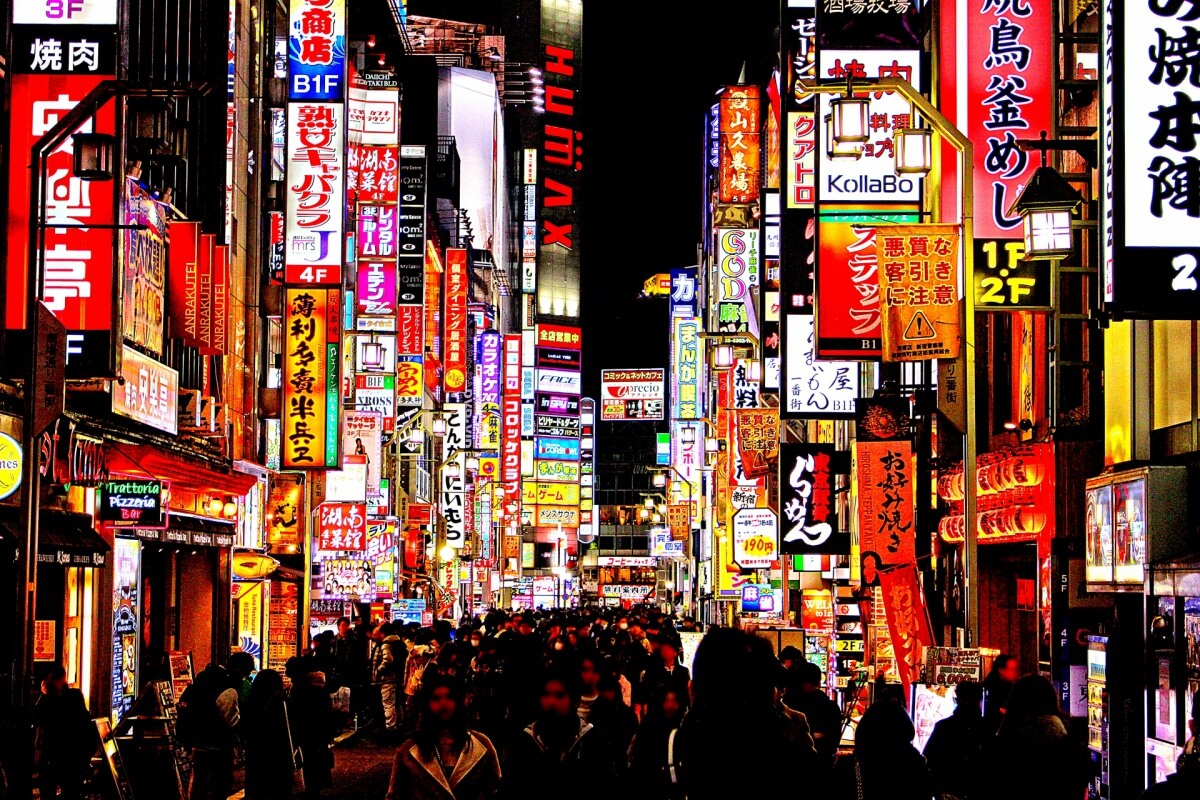Being in a country where you don’t speak the language can be stressful. Unlike many European countries, which use the same alphabet as English and have a lot of cognates, Japanese has a completely different alphabet, so if you’re in a place where there are no English signs, you can get lost quickly. People sometimes say Japanese is the most difficult language in the world to learn. With that in mind, we’ve collected a few key phrases that can help you on your trip. Feel free to bust these out while walking around Tokyo or when meeting friends for dinner to show them you’re putting in some effort.
One important distinction to keep in mind: unlike with English, getting these phrases partially right usually won’t work. Americans are used to “broken English” and deciphering what people are trying to say, but in Japanese, getting close may not be good enough. Part of the reason for this is that Japanese has a limited number of sounds, and there are many homophones, where a single spoken “word” can represent a few different things; without context, the other person won’t know which of those things you’re trying to say. That’s why it’s a good idea to bring along a piece of paper with some key phrases, or save them into your phone, so you’ll have the entire phrase at the ready when you need it! And if you want, you can always learn some more tips about the Japanese language.

- Japanese Greetings
- Introducing yourself in Japanese
- How are you? in Japanese
- Apologizing in Japanese
- Please & Thank You in Japanese
- Useful Japanese phrases at a shop or restaurant
- Asking for directions in Japanese
- Phrases when you don’t understand
- The most important one…
- Learn Japanese at home!
- Japan Wonder Travel Tours
- Other articles you may like
Japanese Greetings
Japanese features different greetings for different times of day. Generally, you can wait to hear which one the other person uses, and repeat that. However, when in doubt, stick with the afternoon greeting.
Good Morning
Ohayo gozaimasu おはようございます
The first word, Ohayo, is actually the one that references morning. Gozaimasu is an expression of politeness that is added onto certain phrases. You will generally never hear Ohayo without gozaimasu at the end of it, unless among close friends and family. Japanese workers say ohayo gozaimasu to many people every day, so they often say it quite fast!
Good afternoon
Konnichiwa こんにちは
You’ve probably heard this one before, as konnichiwa is used as a general “hello” in addition to being “good afternoon.”
Good evening
Konbanwa こんばんは
This is for when you meet someone in the evening. To say it properly, think of it as a three-part rhythm: kon-ban-wa!

Good-bye
Sayonara さようなら
This is another one you’ve likely heard before, it is often said in movies and series. However, Japanese people almost never use it because it is like saying farewell or goodbye forever. Instead you will hear japanese say mata, ya ne or just bye bye.
Good night
Oyasuminasai おやすみなさい
This is what you should say when parting at the end of the evening. It’s sort of like “sleep well,” and can be used when saying good-night on the street or to a housemate right before bed.
Introducing yourself in Japanese
When you first meet someone, there are a couple polite expressions you can use. If you don’t know a lot of Japanese, you won’t be expected to lead the conversation, but if you hear these said, you’ll know how to respond in kind, and you can show off that you know them!
Nice to meet you
Hajimemashite はじめまして
This first phrase is generally only used the first time you meet someone.
Yoroshiku onegaishimasu よろしく おねがいします
This is another way to say “Nice to meet you.” You can also say douzo yoroshiku, which employs douzo, another polite expression (there are many polite phrases in Japanese!)
The big difference in how these two expressions are used is based on the situation: in casual conversation, such as being introduced to a friend of a friend, hajimemashite works. But if you’re speaking to a room full of business associates, you’ll want to use yoroshiku, which has a more formal flair. But if you’re just a tourist excited about meeting new people, you can use both, and your new acquaintances will be impressed!

My name is ______
Watashi wa ______ desu わたしは______です
Watashi is “I,” and desu means “am.” In Japanese grammar, this is how sentences are structured. Wa serves a purpose that is rather complex, but basically, it makes you the subject of the sentence while putting the focus on your name. There are other ways to introduce yourself, but “My name is ______” is the simplest.
I am American
Amerikajin desu アメリカじんです
Obviously, this will differ based on where you’re from, but jin signifies you are from that country. Technically, the phrase would be Watashi wa America-jin desu, but you can omit the first part.
How are you? in Japanese
How are you?
O-genki desu ka? おげんきですか
Technically, this is “Are you well?” but this casual form of asking how someone is doing is the one you’re most likely to hear. In casual situations you will also hear only the word ‘genki’ with a rising intonation to indicate it’s a question.
I am good
Genki desu げんきです
This is the simplest, most polite response to give in return. It’s akin to “I’m fine,” and shows appreciation for the question without getting too into things. Friends will just omit the desu part and say genki.

Apologizing in Japanese
Japanese has two expressions for “sorry,” and they differ in how they are used. While they both technically mean “sorry,” it’s important to understand the difference:
Excuse me
Sumimasen すみません
You will hear this phrase all the time in Japan. Sumimasen is a “sorry” that is more like “excuse me,” and is what you will use if you wish to get an employee’s attention or if you accidentally bump into someone in the aisle of an airplane.
Sorry
Gomennasai ごめんなさい
This is a more serious apology, and is used when you are genuinely sorry for something. It is more likely you will use this with someone you know. However, older Japanese people may use it instead of sumimasen if they bump into you, but they are just being polite.

Please & Thank You in Japanese
Politeness is given the utmost respect in Japan, so if you memorize these key phrases, it will be greatly appreciated.
After you
Douzo どうぞ
This word is like “please,” but is used in situations where you are offering something to someone. If you hold a door for someone, give them a tissue, or serve them a drink, you’ll say douzo, and you’ll hear it from wait staff an awful lot.
Please
Kudasai ください
Onegaishimasu おねがいします
These words are added onto the end of a request to show politeness. Kudasai is less polite than onegaishimasu, and as a result, you will often hear employees say the latter.
Thank you
Arigato gozaimasu ありがとうございます
Here’s that pesky gozaimasu again. As before, it adds politeness, and in general should always be used. You may have heard Domo arigato before, which is essentially “thanks a lot,” and the phrase domo arigato gozaimasu adds an extra layer of appreciation. With friends, you can simply say domo in casual situations like a group dinner if saying arigato gozaimasu over and over becomes repetitive.
You’re welcome
Douitashimashite どういたしまして
The simplest response to arigato gozaimasu. An easy way to remember this one is that it sounds like “Don’t touch my mustache.” That may seem strange, but trust us, you’ll remember it now.
Useful Japanese phrases at a shop or restaurant
Welcome
Irasshaimase いらっしゃいませ
This greeting will be shouted at you often when you enter a restaurant or store. You don’t need to return it, as it’s generally said by staff to customers.
How much is it?
Ikura desuka? or ikura deshouka? いくらですか or いくらでしょうか
This is how you ask for the price of something. If you struggle remembering, a simple ikura will let them know what you’re trying to find out.
Cheers!
Kanpai! かんぱい
As with many cultures, the Japanese have an expression for raising a toast. Hold your glass up and say kanpai, or “finish your drink,” when someone initiates.

Let’s eat!
Itadakimasu いただきます
This is a Japanese way of saying Grace before a meal. It’s polite to repeat this before digging in.
Delicious!
Oishii! おいしい
If you go out to eat at a nice restaurant or sample some of Japan’s delicious street food, you’re bound to hear this expression quite a bit. One little extra: if you add sou, you’re saying what the food looks like. So, oishisou! means “looks delicious!”
Thank you for the meal
Doumo gochisou samade shita どうもごちそうさまでした
This expression means “It was a feast!” If you say this to the chef or proprietor as you leave a restaurant, it will put a smile on their face.
Asking for directions in Japanese
Where is _______?
_______ wa doko desu ka? はどこですか
As before, wa signifies the subject. Doko is where, and ka signifies a question. So if you want to know where Shibuya is, say Shibuya wa doko desu ka?

Phrases when you don’t understand
It’s inevitable that you’ll end up in situations where your Japanese runs short and you can’t carry on a conversation. Japanese people are sometimes shy with their English skills and won’t want to try their English unless they know for sure you don’t understand Japanese. In those situations, let them know:
I don’t understand
Wakarimasen わかりません
I don’t understand Japanese Nihongo ga wakarimasen にほんごがわかりません
Here, you see ga instead of wa. The differences between these two are subtle, so if you mix them up, don’t worry too much about it.
Do you understand English?
Eigo ga wakarimasu ka えいごがわかりますか
Do you speak English
Eigo o hanashimasu ka えいごをはなしますか
Notice the difference between these two phrases. One is asking if the person understands, and one is asking them if they speak the language. Don’t worry too much about which one you use if you’re struggling to find someone who can help you. When a wide-eyed foreigner says eigo to someone in the service industry, they’ll understand what you’re asking.
Is there an English menu?
Eigo no menu (ga arimasu ka)? えいごのメニュー(がありますか)
Technically, what you’re saying here is just “English menu.” But when you’re hungry, it’s good to get to the point. If you want to be polite add the ‘ga arimasu ka’ part.
The most important one…
Finally, here’s an expression you’ll definitely need while exploring the sites of Kyoto:
Can you please take a picture of us?
Shya-shin o totte kudasai しゃしんをとってください
Just say this while thrusting your camera at someone, and they’ll understand what you’d like them to do!

Learn Japanese at home!
Go! Go! Nihon offers a 2 week online course where you can take Japanese lessons at any time you want at home. This is a perfect course for beginners who want to start learning basic Japanese. Variety of lessons including written lessons, audio recordings and role-play are included for this course, and you will also get to learn not only the Japanese language but its culture with demonstration videos. If you are planning to study in Japan or work in Japan, or just before traveling to Japan, this online course can be a good option to take as a first step to learn Japanese! You’ll get a certificate after finishing a course.
▶Buy Go! Go! Nihon Japanese Crash Course
Japan Wonder Travel Tours
If you do not want to worry about the language barrier and are looking for a worry free experience, discover Japan with a local guide! Japan Wonder Travel offers all kinds of tours for you to enjoy, whether you want to learn more about the culture in Kyoto, the food in Osaka or the most popular places to visit in Tokyo; we can help you! Check out our different city tours, all can be customized according to your request.

While this certainly isn’t enough to make you fluent, these phrases should help you with some of the most common situations you’re likely to find in Japan. Have you traveled to Japan or other countries where you didn’t speak the language? What phrases did you wish you’d learned before you went? Let us know so we can help!
Follow us on Instagram, Facebook and Twitter for more travel inspiration. Or tag us to get featured!
Happy travelling!
Other articles you may like

Gregg Maxwell Parker is an author and screenwriter best known for the book Troublemakers. Originally from the United States, he moved to Kobe in 2018. Gregg and his wife, Eriko, are the minds behind the blog As Seen In Japan, where they share pictures and stories from everyday Japanese life. They can be found on Twitter and Instagram.
This post may contain some affiliate links. When you click through and make a purchase we may receive some commission, at no extra costs to you.





